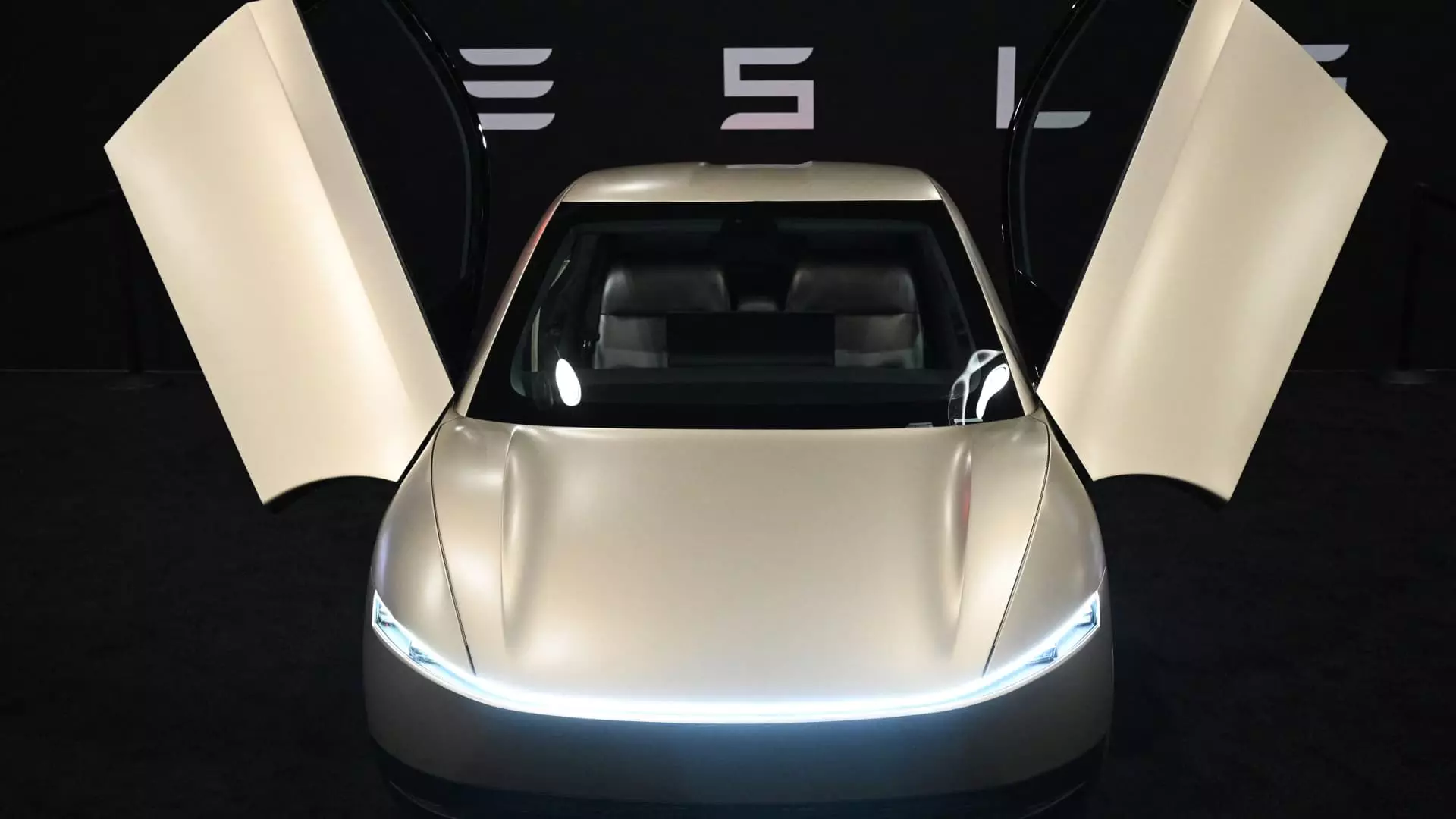For nearly a decade, Elon Musk has tantalized investors with promises of a near-future fleet of robotaxis, alleging that a single software update would unlock the potential for Tesla vehicles to drive themselves seamlessly across the country. However, what has materialized is far from the anticipated vision. The so-called Full Self-Driving (FSD) system, considered by many Tesla enthusiasts to be the golden ticket to autonomous driving, is decidedly limited. While the tech does boast impressive capabilities, it is ultimately a semi-automated solution, still heavily reliant on human oversight. This begs the question: How much longer must we endure Musk’s grand proclamations before we see tangible results?
The Illusion of Control
It’s alarming that Tesla markets its FSD functionality while explicitly warning users that the technology demands active participation. The user manuals emphasize that drivers must maintain their focus on the road, keeping their hands on the wheel at all times. Despite this guidance, many owners inadvertently or deliberately ignore these safety precautions, resulting in a disheartening trend. Reports of dangerous incidents involving Tesla’s driving systems have begun surfacing, casting a shadow of serious doubt over Musk’s promise of safety and reliability.
Test-driving professionals, such as Guy Mangiamele from AMCI Testing, point out the stark dichotomy: while FSD performs with remarkable competence in many scenarios, it is becoming increasingly evident that occasional failures pose deadly risks. A technology that can potentially endanger life should never be treated casually, yet many Tesla users seem to adopt a reckless approach, trusting the system without acknowledging its shortcomings. One must wonder if the allure surrounding such technological advancements is blinding consumers to the genuine dangers at hand.
Political Chaos and Its Impact
Musk’s entanglement with politics over the past few years has further complicated the Tesla narrative. As the financial backbone of Trump’s 2024 campaign, he is influencing federal policy through controversial initiatives aimed at reducing workforce numbers. The resulting backlash against Tesla includes protests and vandalism incidents, which are dissuading potential customers from considering the electric vehicle company. It’s ironic that the same person who promised innovation and futuristic solutions now finds himself mired in political turmoil that tarnishes Tesla’s nice image.
The current political climate has made it increasingly difficult for Tesla to maintain its previously voracious appeal. With an atmosphere charged by division, prospective buyers may be wary of associating with a brand that seems synonymous with controversy. Recent figures show existing owners are trading in their vehicles at levels never seen before. This downward spiral can only compound the challenges Tesla faces in trying to fulfill its ambitious visions.
Stock Slide and Market Pressure
Tesla’s stock has taken a nosedive, plummeting by 36% in the first quarter of 2025 alone. Investors are becoming increasingly jittery, given the company’s inability to meet growth expectations or deliver on its hype surrounding a supposed robotaxi launch. The decline in vehicle deliveries—a staggering 13% fall in Q1 compared to the same period last year—paints a disheartening picture for a company often celebrated as a leader in innovation. Analysts remain cautious, offering a glimmer of hope that upcoming product unveilings might provide a reprieve, but skepticism remains palpable.
In the face of such adversity, one cannot help but question Elon Musk’s unwavering confidence. His assertions regarding a driverless ride-hailing service set to launch in Austin in June feel increasingly like a desperate effort to instill optimism among discontented investors. Conditions of uncertainty are rife, and the technological milestones he has promised don’t appear imminent. Tesla’s future depends not only on its technology but also on the perceptions it cultivates in the public sphere.
Falling Short of Expectations
Despite the chorus of fans chanting praises for Tesla’s FSD, the reality remains much more sobering. Anecdotal evidence from automotive safety experts, like Sam Abuelsamid of Telemetry, suggests that the FSD technology still has a monumental distance to cover before it can escape the bounds of supervised operation. The potential for unforeseen failures means that trusting this tech for unsupervised driving is reckless. The prevalent unpredictability surrounding its performance raises essential questions about the viability of Musk’s grand narrative.
Tesla’s marketing often overshadows the real conversations we ought to have about safety, accountability, and the ethics of autonomous driving. As consumers increasingly navigate these uncharted waters, a critical and nuanced discourse must guide our collective understanding of autonomous technology’s role in our society. Only through confronting the limitations and vulnerabilities of such advancements can we authentically chart a path toward the kind of future Musk professes to envision. This path isn’t merely one of innovation; it’s also one marked by responsibility, integrity, and the socio-political implications that come with it.

